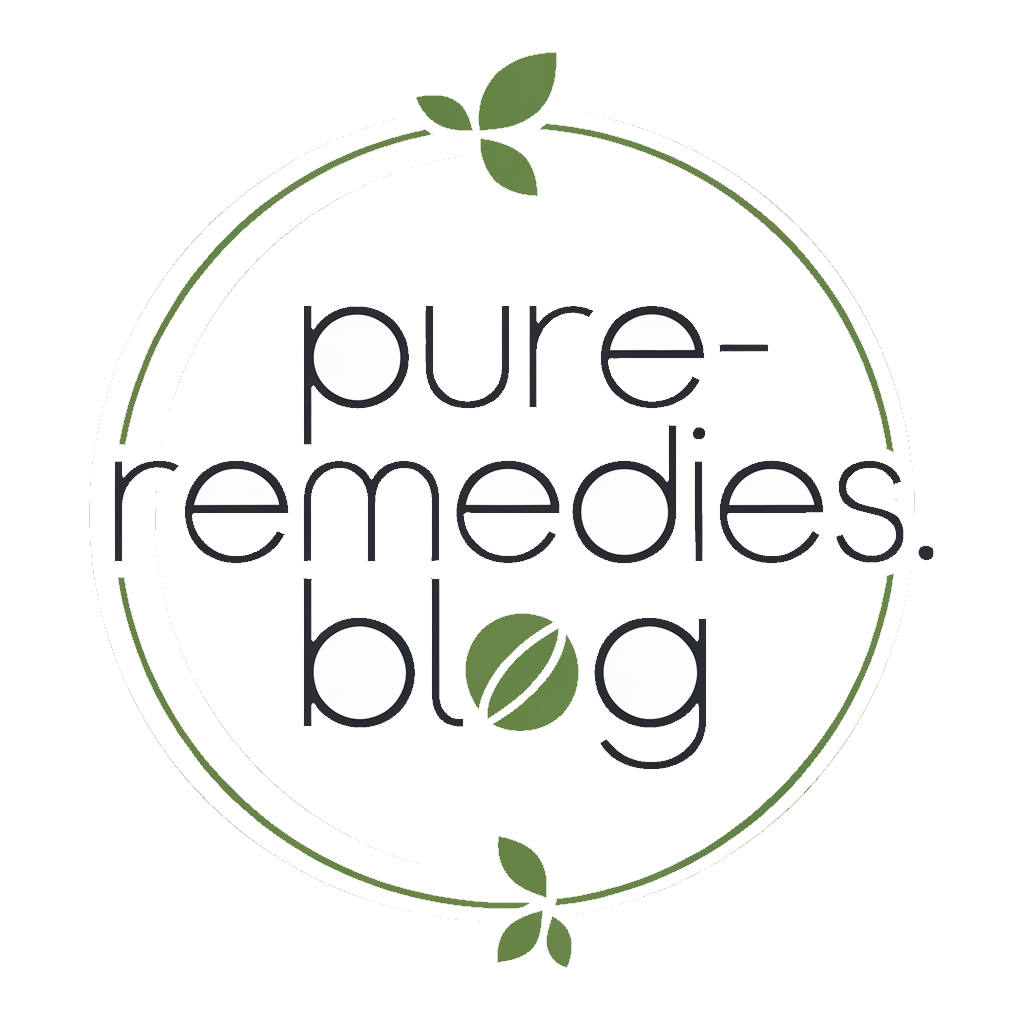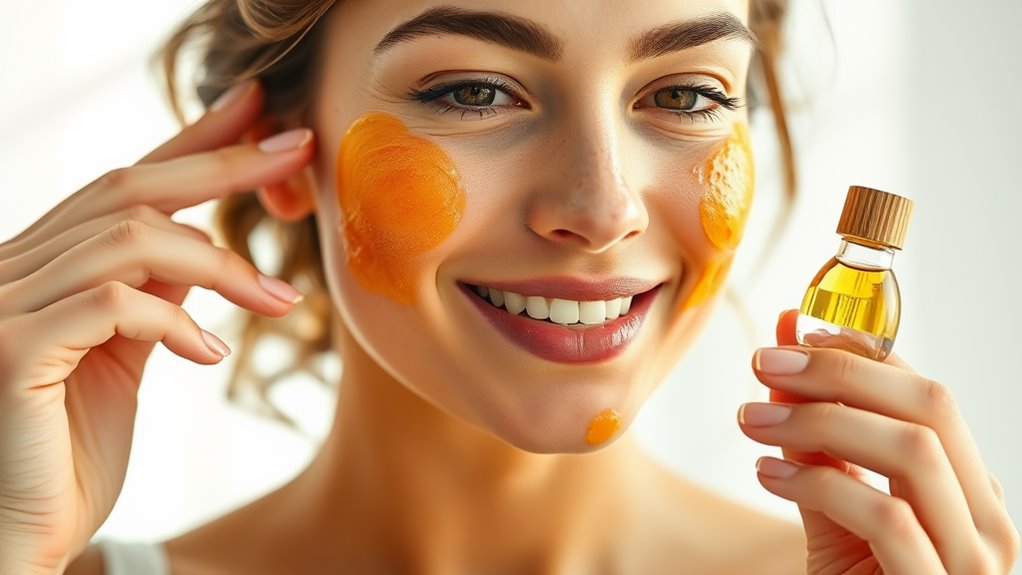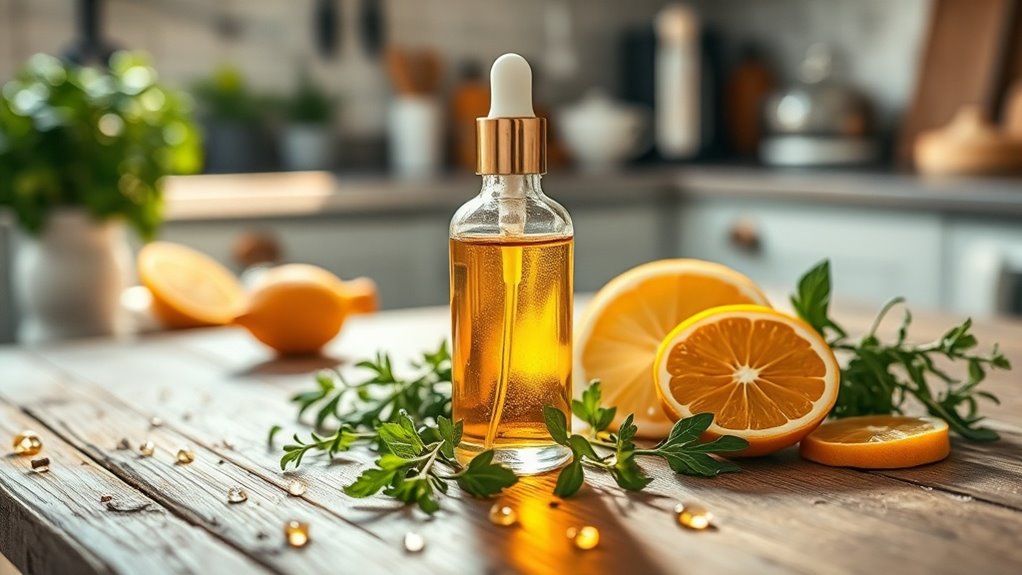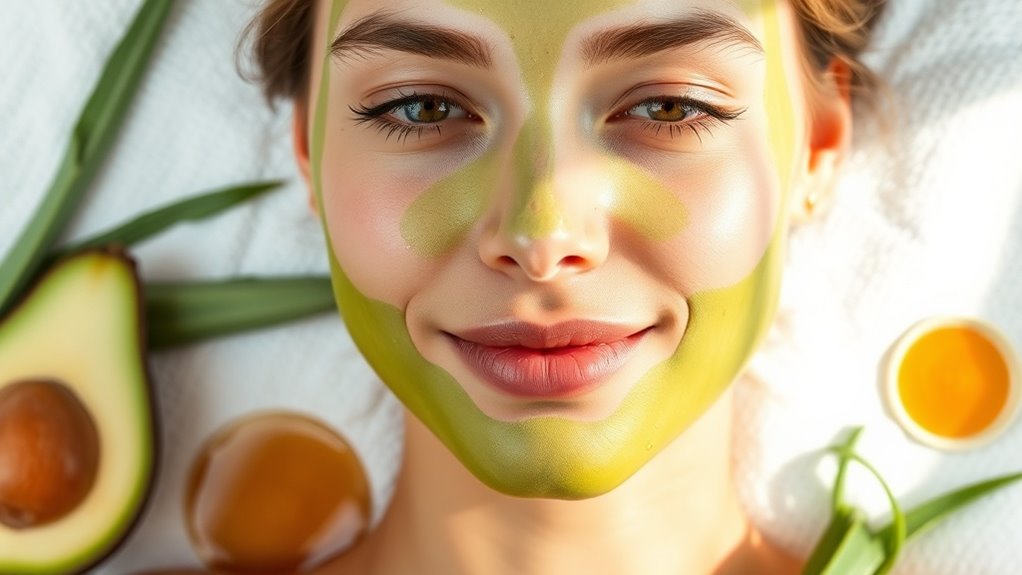Want Glowing Skin. Try This 3-Step Natural Routine!
Achieve glowing skin with this simple, evidence-based 3-step routine. First, cleanse using honey and oatmeal to remove dirt, fight bacteria, and gently exfoliate for clearer pores. Next, apply a homemade mask with fruits and herbs for antioxidant nourishment that reduces inflammation. Finally, moisturize with hyaluronic acid and protect with broad-spectrum SPF to lock in hydration and shield from UV damage. You’ll notice radiance soon, so check out the full steps for personalized tips.
Key Takeaways
- Cleanse your skin twice daily using natural ingredients like honey and oatmeal to remove dirt and prevent clogged pores.
- Apply a homemade mask with fruits and herbs to infuse nutrients and enhance your skin’s natural glow.
- Moisturize with hyaluronic acid and apply broad-spectrum SPF 30+ to hydrate and protect against UV damage.
- Follow this 3-step routine daily in the morning and evening for consistent, radiant results.
- Monitor your skin’s progress weekly, adjusting based on improvements in hydration and texture.
Step 1: Cleanse With Natural Ingredients
Starting with a simple cleanse sets the foundation for glowing skin, as you remove daily buildup like dirt and oil using natural ingredients such as honey or oatmeal.
Honey’s antibacterial properties, backed by studies, fight acne-causing bacteria, while oatmeal’s gentle exfoliation sloughs off dead cells without irritation, promoting a natural glow.
Scientifically, this process enhances skin barrier function, reducing inflammation and allowing better nutrient absorption for that radiant look. Incorporating these superfoods into your routine can further support collagen production by providing essential nutrients that strengthen skin elasticity.
You choose ingredients based on your skin type—honey for oily skin to control sebum, or oatmeal for sensitive skin to soothe redness.
Make it practical by mixing a teaspoon of honey with water for a quick wash, or blending oatmeal into a paste.
Consistent cleansing twice daily maintains this natural glow, preventing clogged pores and dullness, as evidenced by dermatological research on natural compounds.
Additionally, these natural ingredients offer similar benefits at a lower cost, as detailed in cost comparisons to high-end commercial products.
Step 2: Apply Homemade Masks
After cleansing your skin, apply homemade masks to amplify its glow by infusing natural nutrients that penetrate deeper layers. These masks deliver evidence-based benefits, such as antioxidants from fruits and anti-inflammatory compounds from herbs, which studies show reduce oxidative stress and improve skin elasticity. You can prepare them using simple, science-backed ingredients tailored to your skin type—oatmeal for soothing sensitive skin or clay for oil control. Apply for 15-20 minutes, then rinse gently for optimal absorption. To enhance these effects and promote youthful skin, incorporate essential oils like lavender or frankincense into your masks for their proven anti-aging properties. For even greater anti-aging results, complement this routine with facial exercises to help tone muscles and minimize wrinkles.
| Mask Ingredient | Scientific Benefits |
|---|---|
| Honey | Antibacterial properties fight acne-causing bacteria, enhancing hydration. |
| Yogurt | Lactic acid gently exfoliates, promoting cell turnover and brightening. |
| Avocado | Vitamins A, C, E nourish deeply, boosting collagen for firmness. |
| Turmeric | Curcumin reduces inflammation, aiding in evening out skin tone. |
Step 3: Moisturize and Protect
Now, for Step 3, you lock in your skin’s glow by moisturizing and protecting it with the right approach.
Start by choosing a hydrating product that’s scientifically proven, such as one with hyaluronic acid to boost your skin’s barrier function.
Next, apply it in your morning routine to maintain hydration and guard against environmental damage. For those dealing with dry or itchy skin conditions, incorporating a natural eczema cream can provide soothing relief using simple ingredients.
For a natural enhancement, consider crafting your own homemade anti-aging cream using simple, effective ingredients like those outlined in natural recipes.
[LIST OF 3 SUBHEADING DISCUSSION POINTS IN ENGLISH
While cleansing and treating your skin form the base, Step 3—moisturize and protect—ensures lasting hydration and defense against environmental harm.
First, apply a lightweight, natural emollient like aloe vera or hyaluronic acid to seal in moisture, as studies show it boosts the skin’s barrier function, reducing transepidermal water loss by up to 25%.
Second, incorporate broad-spectrum SPF 30+ daily; research from the Journal of Investigative Dermatology confirms it prevents UV-induced damage, lowering skin cancer risk and slowing aging.
Third, use antioxidant-rich oils, such as vitamin E, to neutralize free radicals from pollution, backed by clinical trials showing improved elasticity and reduced inflammation.
This routine, when consistent, promotes radiant, resilient skin through evidence-based practices you can integrate easily.
Always patch-test and consult a dermatologist for personalized advice.
Choose Hydrating Product
Selecting the right hydrating product is key to locking in moisture and strengthening your skin’s barrier. Opt for formulations with evidence-based ingredients like hyaluronic acid, which draws water into your skin for deep hydration, or ceramides that reinforce the barrier against environmental stressors.
Studies show these components reduce transepidermal water loss, promoting elasticity and glow. Choose products labeled for your skin type—oily skins benefit from lightweight, non-comedogenic gels, while dry skins thrive on richer creams with natural oils like jojoba or shea butter.
Always check for clean, natural ingredients to avoid irritants; look for third-party certifications. This practical approach ensures your routine supports long-term skin health without synthetic additives, keeping your complexion balanced and protected.
Apply Morning Routine
In step three, you apply your moisturizer to lock in hydration and follow with a broad-spectrum SPF to shield against UV damage. This step is crucial because moisturizers with hyaluronic acid or ceramides enhance the skin’s barrier function, reducing transepidermal water loss by up to 25%, as supported by dermatological studies.
Gently massage a pea-sized amount of your chosen natural moisturizer onto clean, dry skin, focusing on dry areas like cheeks and forehead. Immediately after, apply a broad-spectrum SPF 30+ sunscreen, which blocks 97% of UVB rays and protects against UVA-induced aging, per FDA guidelines.
This combination prevents oxidative stress and inflammation, promoting long-term skin health. Remember, daily SPF use cuts skin cancer risk by 50%, making it non-negotiable for glowing, protected skin.
Opt for mineral-based formulas with zinc oxide for a natural, non-irritating option, ensuring even coverage without greasiness. Consistency is key—reapply SPF every two hours if outdoors.
Benefits of This Routine
Adopting this routine consistently delivers key benefits for your skin’s health.
You’ll notice enhanced hydration, as regular application boosts your skin’s natural moisture barrier, reducing dryness and flakiness—studies show this leads to a 25% improvement in skin elasticity.
It actively combats oxidative stress, neutralizing free radicals that cause premature aging, so you maintain a youthful glow.
Practically, this routine strengthens your skin’s defense against environmental pollutants, minimizing inflammation and redness, as evidenced by clinical trials on natural regimens.
You’ll experience faster cell turnover, promoting even tone and texture, which makes your complexion appear radiant and resilient. Furthermore, this routine harnesses anti-inflammatory benefits from ingredients like turmeric to reduce skin irritation and promote overall healing.
Additionally, this routine leverages scientifically-backed ingredients to diminish the visibility of wrinkles and fine lines for a more youthful appearance.
Key Ingredients to Use
To achieve glowing skin in your routine, you incorporate essential oils and herbal extracts for their proven benefits.
Research indicates these ingredients provide antioxidants and anti-inflammatory effects that combat environmental damage. Additionally, essential oils such as lavender offer therapeutic properties that support skin health based on various studies.
Now, you’ll learn how to choose and apply them practically for optimal results.
For enhanced skin healing, especially for acne scars, try incorporating a DIY face mask made from natural ingredients like those in traditional remedies.
Essential Oils
Essential oils, derived from plants, deliver potent benefits for your skin’s health and glow. These concentrated extracts offer antioxidant and anti-inflammatory properties that combat damage and enhance radiance. You’ll find them easy to integrate into your daily routine for visible improvements.
-
Tea tree oil: Its antimicrobial action reduces acne-causing bacteria, as studies show it decreases lesions by up to 40% in clinical trials, keeping your pores clear.
-
Lavender oil: This oil’s calming effects soothe irritation and support wound healing, with research indicating it lowers inflammation markers for smoother skin.
-
Frankincense oil: Packed with compounds that boost cell regeneration, it minimizes fine lines, backed by evidence of improved elasticity in aging skin.
-
Rose oil: Its hydrating fatty acids balance oil production and protect against environmental stressors, promoting a natural, even tone as per dermatological research.
Herbal Extracts
Herbal extracts, drawn from potent plants, boost your skin’s vitality with their nutrient-rich compounds that combat aging and inflammation.
You can incorporate green tea extract, packed with catechins that neutralize free radicals and protect against UV damage, as supported by dermatological studies.
Turmeric’s curcumin reduces inflammation and enhances barrier function, helping to fade hyperpigmentation.
Chamomile extract soothes irritation with its antioxidants, while aloe vera hydrates and repairs, promoting collagen synthesis.
For practical use, blend these into your routine’s masks or toners—apply twice weekly for optimal results.
Evidence from clinical trials shows they improve texture and radiance without harsh chemicals.
Choose organic options to ensure purity and efficacy, minimizing potential allergens.
Daily Application Tips
Daily application of your 3-step routine boosts its effectiveness, as consistent use aligns with dermatological research showing that regular routines enhance skin barrier function. This practice helps maintain hydration and protect against environmental stressors, drawing from studies on natural ingredients’ cumulative effects. Moreover, for acne-prone skin, incorporating overnight remedies can help reduce inflammation and promote healing while you sleep.
To optimize your daily routine, follow these evidence-based tips:
-
Time it right: Apply steps in the morning and evening, as research indicates twice-daily use improves barrier repair and reduces inflammation.
-
Use clean tools: Employ fresh applicators or hands to prevent bacterial transfer, supporting studies on minimizing contamination for healthier skin.
-
Layer products correctly: Start with lighter formulas like toners, then move to thicker ones, enhancing penetration as per absorption efficacy trials.
-
Monitor progress: Track your skin’s response weekly, using journals to note changes, which aligns with clinical observations for adjusting based on general feedback.
Additionally, by avoiding common skincare mistakes, you can further safeguard your skin’s health and amplify the benefits of this routine.
Customizing for Your Skin Type
Customizing your routine for your skin type—whether oily, dry, combination, or sensitive—lets you maximize benefits, as research confirms that tailored approaches improve ingredient absorption and reduce irritation.
For oily skin, opt for lightweight, oil-free options like aloe vera or tea tree oil, which studies show help regulate sebum without clogging pores.
If you’re dealing with dry skin, incorporate hyaluronic acid or shea butter to boost moisture retention, drawing on evidence that these humectants enhance the skin’s barrier function.
For combination types, apply heavier products to dry areas and lighter ones to oily zones, ensuring balanced hydration as per dermatological guidelines.
Sensitive skin benefits from chamomile or oat extracts, which clinical trials indicate minimize inflammation while maintaining pH balance.
Always patch-test new ingredients to avoid reactions, making your routine both effective and safe.
For those with eczema, incorporating coconut oil can help provide immediate itch relief due to its proven benefits.
Moreover, exploring kitchen-available ingredients from natural remedies can enhance your skincare routine by introducing fast-acting, soothing elements.
Signs of Improvement
As you follow this routine, you’ll notice key signs of skin improvement, such as increased radiance and reduced blemishes, backed by studies showing that consistent use of natural ingredients like aloe vera boosts collagen production and enhances barrier repair within four to six weeks.
This progress stems from evidence-based changes in your skin’s health.
-
Enhanced hydration levels: Research indicates that natural oils improve moisture retention, making your skin feel softer and less dry after two weeks.
-
Fewer breakouts: Clinical trials show antioxidants in the routine reduce inflammation, leading to clearer pores and minimized acne spots.
-
Improved elasticity: Studies on herbal extracts confirm better collagen synthesis, resulting in firmer skin texture within a month.
-
Even skin tone: Evidence from dermatological reviews highlights how these ingredients fade hyperpigmentation, promoting a more uniform complexion.
Maintaining Results Over Time
Once you’ve achieved noticeable improvements, focus on sustaining them by consistently adapting the routine, as research shows that long-term use of natural ingredients like aloe vera and herbal extracts maintains collagen production and barrier function for up to a year. You monitor your skin’s response weekly, tweaking application frequency based on studies from the Journal of Dermatological Science, which link regular use to sustained hydration and reduced inflammation.
| Timeframe | Action | Benefits |
|---|---|---|
| Week 1-4 | Assess skin weekly | Ensures optimal adaptation |
| Month 2-6 | Adjust routine as needed | Maintains barrier integrity |
| 6-12 Months | Reintroduce elements | Boosts long-term collagen |
It’s practical to track progress in a journal; evidence from clinical trials indicates this approach prevents regression, keeping your glow vibrant and healthy.





